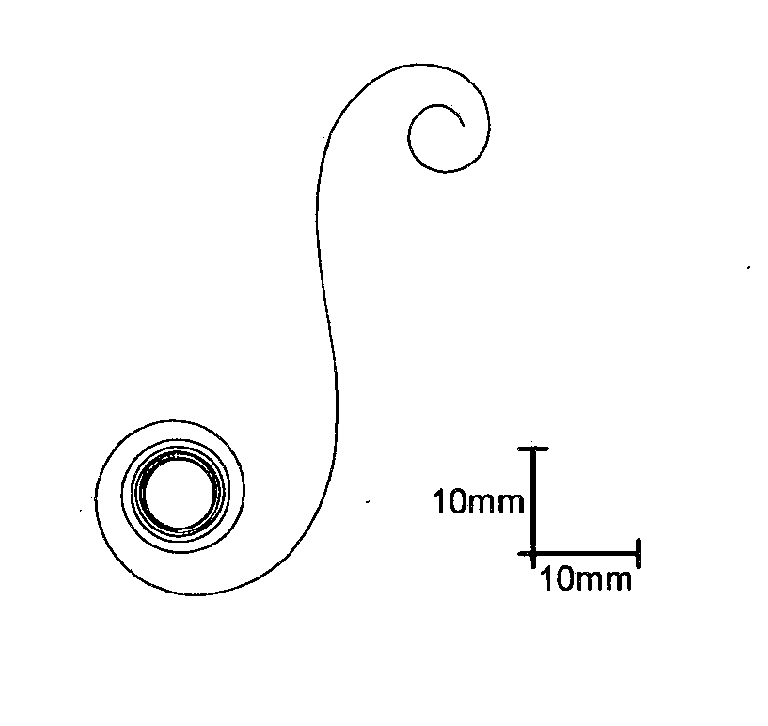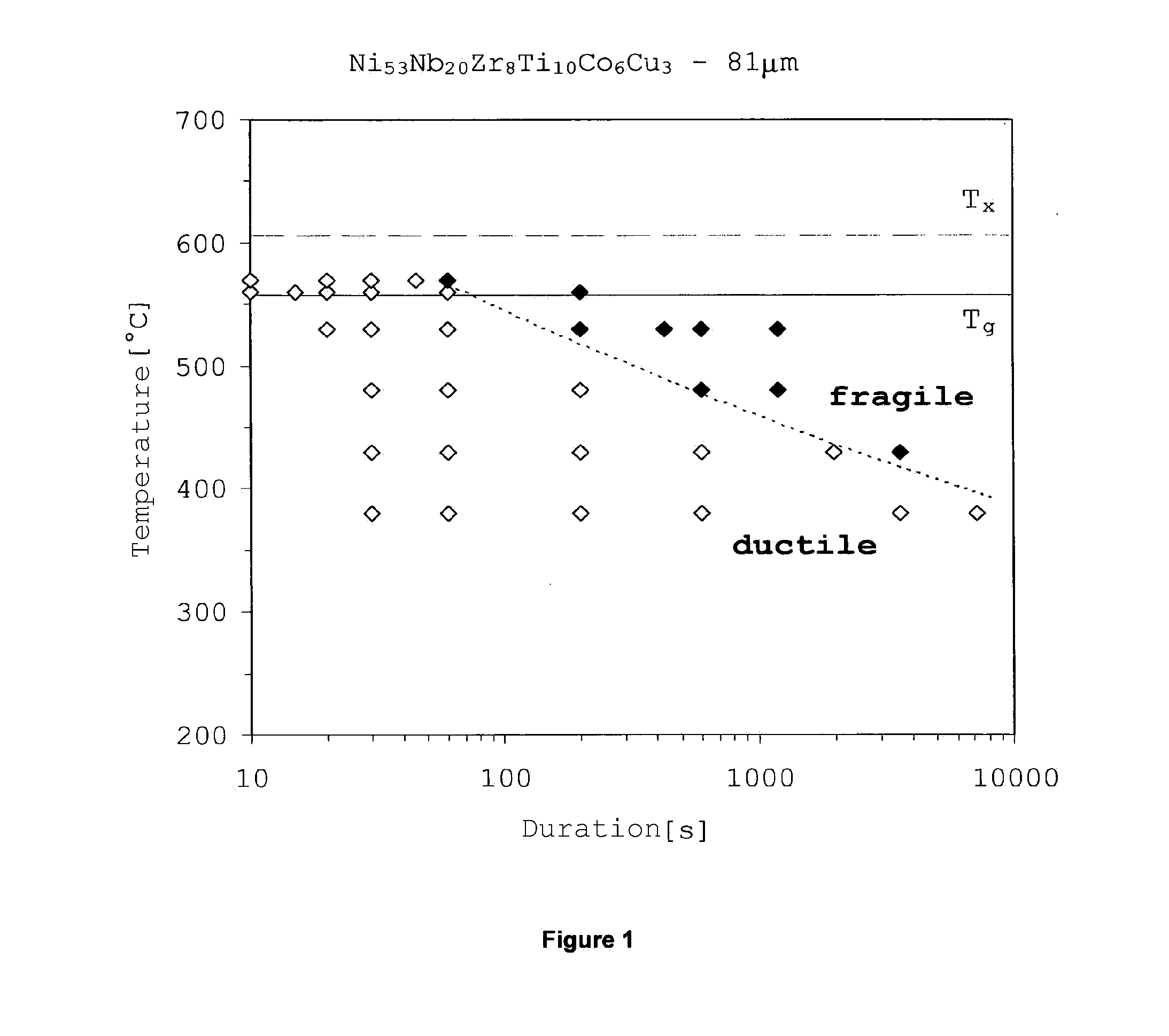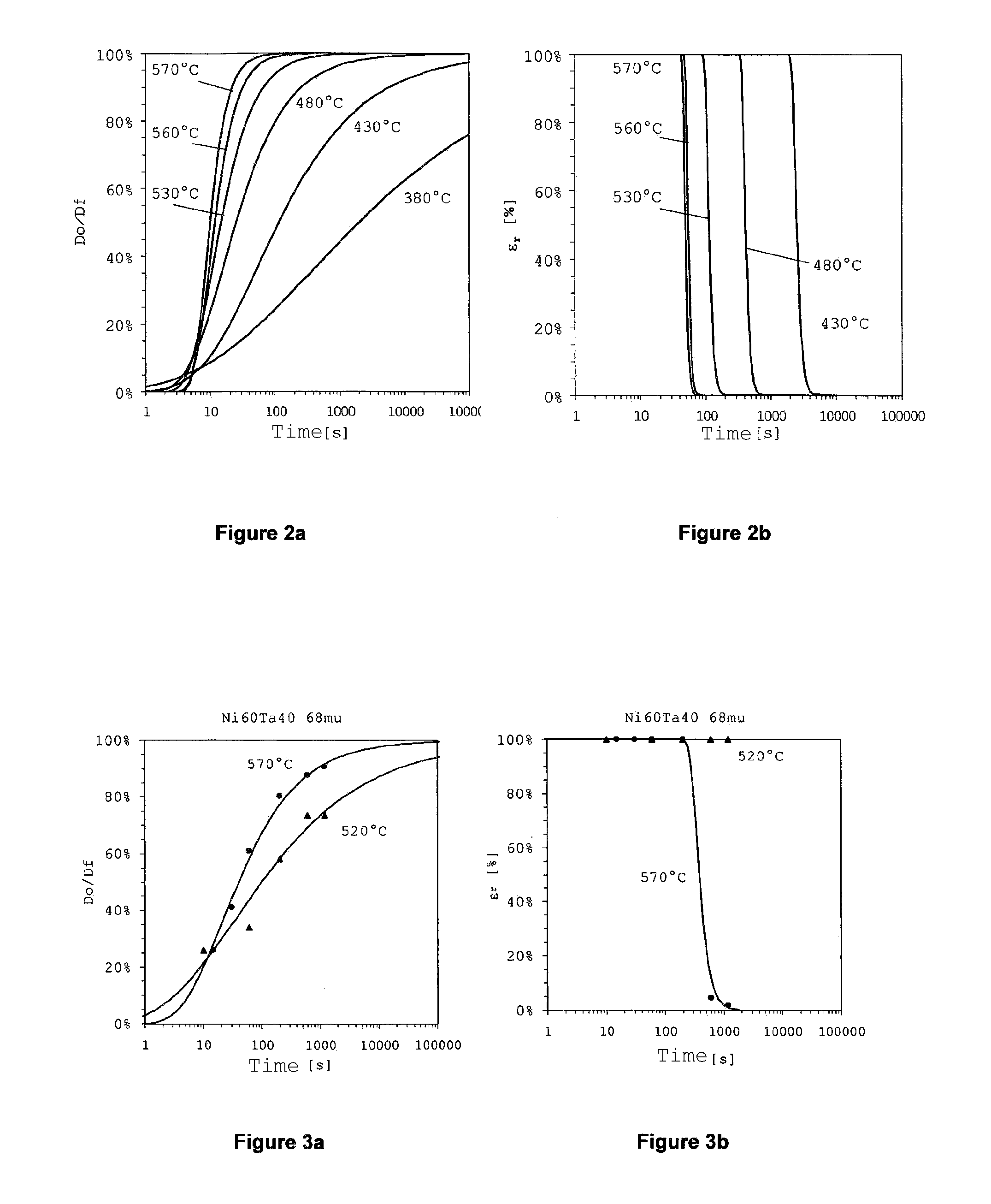Method for making a spring for a timepiece
a technology of timepieces and springs, applied in the direction of clock driving mechanisms, instruments, horology, etc., can solve the problems of high risk of delamination of laminated structures, resin ageing well, loss of properties, etc., and the risk becomes all the more accentuated
- Summary
- Abstract
- Description
- Claims
- Application Information
AI Technical Summary
Problems solved by technology
Method used
Image
Examples
example 1
[0043]Ribbons of Ni53Nb20Zr8Ti10Co6Cu3 (elastic limit: 2600 MPa) were produced by planar flow casting, which involves forming a flow of liquid metal over a cooled wheel. From 10 to 20 g of alloy are placed in a distribution nozzle heated to between 1050 and 1150° C. The width of the nozzle slot opening is between 0.2 and 0.8 mm. The distance between the nozzle and the wheel is between 0.1 and 0.3 mm. The wheel onto which the molten alloy is deposited is a wheel made of copper alloy driven at a speed of 5 to 20 m / s. The pressure applied in order to expel the molten alloy through the nozzle is between 10 and 50 kPa. Table 1 below gives the characteristics of three ribbons obtained.
TABLE 1characteristics of three ribbons used,made of Ni53Nb20Zr8Ti10Co6Cu3 alloyVariationinVariationDuctile / LengthThicknessthicknessHeightin heightfragileRibbon[cm][μm][μm][mm][mm][—]1900840.81.230.01Ductile25001091.11.440.02Ductile31700810.81.370.02Ductile
[0044]The thermal properties were measured by DSC (D...
example 2
[0062]FIGS. 3a, 3b respectively depict curves of fixing and of deformation at break for a ribbon 68 μm thick made of an amorphous Ni60Ta40 alloy (at %, elastic limit: 2900 MPa), in which Tg=740° C. and Tx=768° C. These curves are the results of tests at 520° and 570° C. and show that the fixing behavior is similar to that of the Ni53Nb20Zr8Ti10Co6Cu3 alloy and that at 520° C., weakening has not been reached over the durations tested (up to 30 minutes).
example 3
[0063]FIGS. 4a, 4b respectively depict curves of fixing and deformation at break for a ribbon 73 μm thick made of an Ni60Nb10Ta30 alloy (elastic limit: 2700 MPa), in which Tg=721° C. and Tx=747° C. These curves also show that the behavior is comparable with that of the two previous alloys.
[0064]The results displayed on these various diagrams lead to two observations: i) it is possible to give a ribbon of metallic glass a curvature by fixing below its glass transition temperature and ii) there is a range of temperatures and treatment domains within which the alloy remains ductile.
[0065]The sigmoid behavior of the expansion and the deformation at break as a function of time or as a function of annealing duration observed on the Ni53Nb20Zr8Ti10Co6Cu3 ribbons is similar to that of the other alloys tested. This behavior was also observed on alloys based on Fe and / or Co, some of which have no Tg or have a Tg>Tx. It may therefore be conceded that this behavior can be generalized to other m...
PUM
| Property | Measurement | Unit |
|---|---|---|
| thickness | aaaaa | aaaaa |
| thickness | aaaaa | aaaaa |
| temperature | aaaaa | aaaaa |
Abstract
Description
Claims
Application Information
 Login to View More
Login to View More - R&D
- Intellectual Property
- Life Sciences
- Materials
- Tech Scout
- Unparalleled Data Quality
- Higher Quality Content
- 60% Fewer Hallucinations
Browse by: Latest US Patents, China's latest patents, Technical Efficacy Thesaurus, Application Domain, Technology Topic, Popular Technical Reports.
© 2025 PatSnap. All rights reserved.Legal|Privacy policy|Modern Slavery Act Transparency Statement|Sitemap|About US| Contact US: help@patsnap.com



